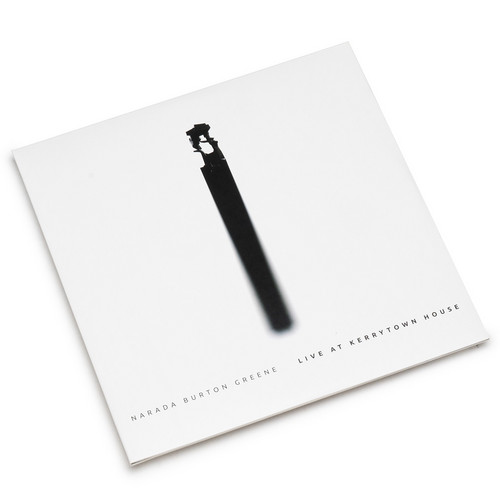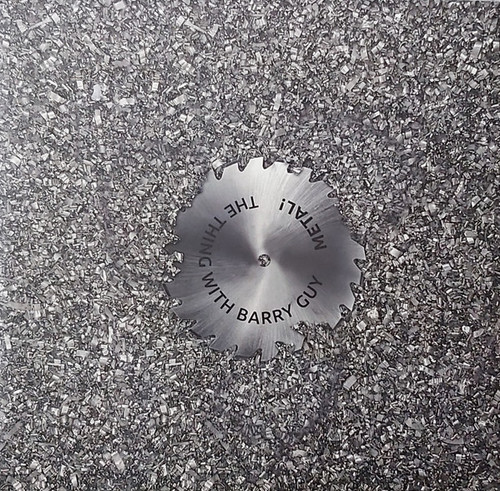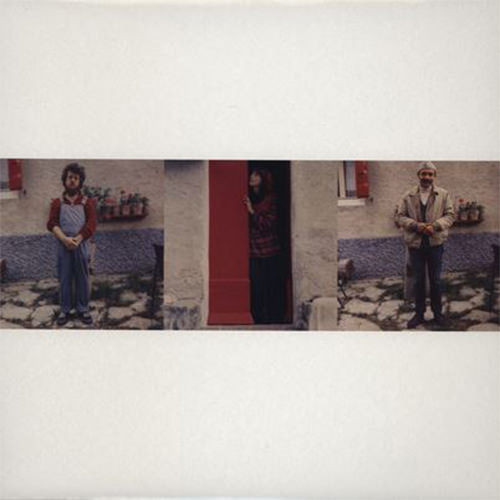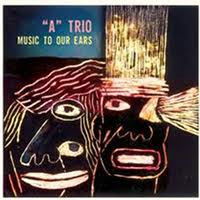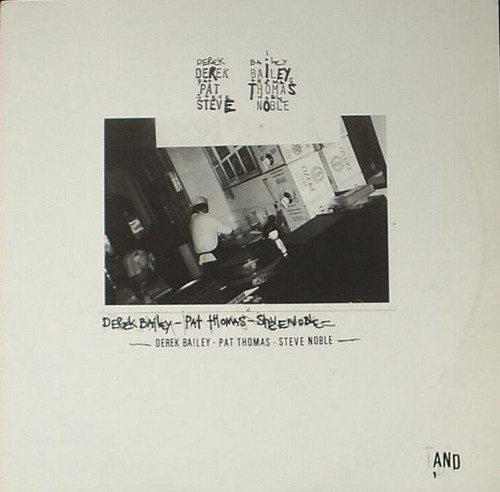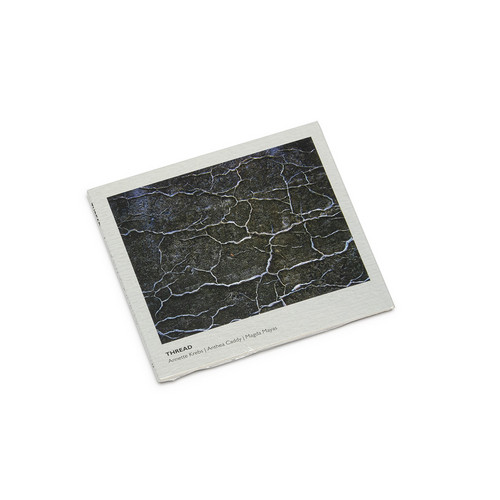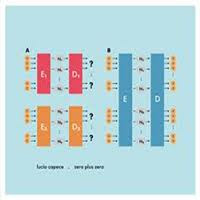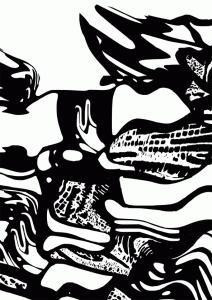Jazz /
Entraxes inégaux Craquer les liants
Reissue of two LPs from Bloc Thyristors label and two groups run by the drummer Jean-Noël Cognard. Empan with Judith Kan, voice, Jac Berrocal, trumpet, piano, Dan Warburton, violin, keyboards, Béatrice Godeau, cello. Tankj with Serge Adam on trumpet, Jérome Noetinger on electroacoustic devices and tape recorder, Titus Oppmann on doublebass. Recorded and mixed by Patrick Müller.
'Blow job
Blowjob’ is an album stripped of glamour, fancy artistry and advanced studio techniques. This is one man, one saxophone and the musical intentions of a modern musician. The second album in +3DBs series Music for ONE opens up a different view on improv than that of Michael Duch (Edges - +3DB009.) With Møster, an experimental attitude is mixed with an underlying sense for the history of jazz. This is not jazz anymore though, but a contemporary art form with a solid memory. Upholding a music…
The beginning of the Second Earth
"After the successful and exciting adventure with The Pyramids (3 fantastic albums issued in the 70's), Idris (who founded the aforementioned group) in 1979 formed Cultural Odyssey (which is still running), fresh from touring Africa and observing the interdisciplinary nature of African artistic culture. the music presented on this rocket is from the very 1st performance by this exciting new group, which took place in San Francisco (1980). strange enough it's also the very 1st LP under Idris Acka…
Live at Kerrytown House
Though modern, “avant-garde” jazz is an ensemble music often based on collective improvisation, solo performance is its own extraordinarily fruitful sub-area of investigation for the creative improviser. Without a reactive, interpretive partner (or several), the solo recital blurs the lines between composition and improvisation as the performer enters a world of unfettered development. Greene has been performing and recording solo since the 1970s, and these settings have yielded some of t…
Metal!
A double LP of The Thing (Mats Gustafsson, Ingebrigt Haker Flaten, and Paal Nilssen-Love) performing live with bassist Barry Guy at Saint Catherine's Church, Vilnius, Lithuania in 2011, exceptional cutting-edge improvisation.
Six Feet Under
Nate Wooley, trumpet. Christian Weber, bass. Paul Lytton, percussion. Recorded November 30, 2009 at Radio Studio Zürich, Switzerland by Martin Pearson "Five group compositions recorded in 2009 at Switzerland's Radio Studio Zurich by trumpeter Nate Wooley, bassist Christian Weber, and percussionist Paul Lytton, amazing cross-Atlantic improvisation. " Squidco
Live at the Squat Theatre
LP, heavy fluorescent orange vinyl; ltd and numbered 1/99 only, rec. August 24, 1979; first landing of the Arkestra at Squat ! on back cover there's even an elusive photo of original Squat entrance/building. Arkestra personnel during that period:John Gilmore, Marshall Allen, Elo Omoe, Danny Thompson, Michael Ray, June Tyson, Pat Patrick, Hayes Burnett, and James Jackson, Jr."So many fond, fun memories of those magical, wonderfully endless Nights Of Ra at Squat - the time there was a massive b…
Große Gartenbauausstellung
Sven-Ake Johansson, Andrea Neumann and Axel Dörner formed the trio Barcelona Series in the end of the 90's. Their music was utterly important for the development of the new improscene, the new ways of improvising by using your instruments more as acoustic bodies than traditional instruments. Johansson had since the 70's been experimenting with a music with less gestures but anyhow keeping the emotional pressure. Both Dörner and Neumann were pioneers in their ways of playing their instrume…
Thing
This powerful 1972 performance by Arni Cheatham's group provides a unique glimpse of the jazz scene in Boston. The group borrowed the most innovative characteristics of jazz and rock, but never sounded derivative. This is early seventies "jazz fusion" of the highest order, before the term evolved to mean a light, commercially acceptable genre. As with many innovative jazz forms, the recording was made at one of the many local universities, Harvard. The resulting album was pressed in scant…
St. Francis Duo
Having played together in Æthenor for the last couple of years, Steve Noble & Stephen O'Malley came together to play as a duo at Cafe Oto in 2011. These recordings are the results of these two hot and sticky nights in East London. Noble is a regular at Bo' Weavil Recordings, having appeared on over nine recordings for the label, and a linch pin in London's improvising community. Steve Noble studied with Nigeria master drummer Elkan Ogunde and in the early 1980s and over the last 20 years has pla…
Ithaca
Restocked!! Last copies arounf - recorded on november 2010, 'Ithaca' stands as one of the missing links between the tradition of free jazz and the current explorations in sound art. Bringing together one of the greatest living free jazz saxophonists and a young talented percussionist and sound sculptor, you have a record that sounds like a 'classic' and yet way ahead of its time. McPhee’s playing here is so lucid that it feels like a compendium of all those aspects of his style that have e…
Archi
Issued for an art event recently presented at the Galleria Milano in the first week of April 2012, the recordings on this LP edition represent a very specific and intimate moment in the creative sound production of Davide Mosconi with NADMA associates Inez Klok and Gustavo Bonora.For Davide Mosconi and for all the artists and musicians involved in the groups he founded (the legendary NADMA, Organic Archestra, Il Quartetto, Alea), improvising sessions were a daily practice that founded their very…
Music to our ears
Mazen Kerbaj, trumpet. Sharif Sehnaoui, acoustic guitar. Raed Yassin, double bass. All music improvised by Kerbaj, Sehnaoui, Yassin. Recorded, mixed and mastered by Fadi Tabbal at tunefork studio on the 29th and 30th of september 2010. Artwork & design by Mazen Kerbaj."f you look up moving companies in the Yellow pages, you’ll see a bunch of companies who put “A” in front of their name (as in A-Alert Moving), presumably in the hope that you’ll call the first listing you find in the book. I ki…
Tout for tea
Guitar, Voice - Derek Bailey, Eugene Chadbourne. Recorded 2-1-1995. Released by Rectangle, a Jazz and improvisation music label from Paris.
And
Derek Bailey, electric guitar. Pat Thomas, keyboards. Steve Noble, turntables. Recorded at Moat Studios, London, August 1997.
Ist Gefallen In Den Schnee
Ist Gefallen In Den Schnee documents a landmark collaboration between Swedish composer Magnus Granberg and his ensemble Skogen. Recorded in November 2010, this nonet features an expanded lineup including Angharad Davies (violin), Toshimaru Nakamura (no-input mixing board), and Granberg himself on piano. The title, borrowed from Schubert’s “Winterreise” (“Wasserflut”), signals the work’s reflective engagement with song cycles and memory. Granberg structures the piece using rhythmic and formal mod…
Thread
Thread, realized between Berlin in 2008 and 2009, brings together three like-minded experimentalists - Annette Krebs, Magda Mayas, and Anthea Caddy - with backgrounds in duo collaboration but fresh as a trio. Krebs’ prepared guitar, tapes, and mixing desk act as both generator and disruptor, her playful use of vocal fragments and sampled sounds adding surreal charge. Mayas’ piano - a hybrid of acoustic and prepared techniques - delivers hammered harmonics, inside-string tremors, and pulses of su…
Zero Plus Zero
'Lucio Capece (soprano saxophone, bass clarinet, sruti box, double plugged equalizer, ring modulator, sine waves). Recorded at Berlin between 2009 and 2011. Zero Plus Zero can be described as a suite consisting of six structured pieces, where Lucio Capece expresses his huge creativity by exploring the possibilities of his main instruments - soprano saxophone and bass clarinet with preparations - as some others such as struti box and various electronic devices. Lucio Capece keeps on worki…
Seasons Two
2012 release ** CD packaged in A5 booklet. "Awesome Solar Ipse label debut recordings! “Season Two” is the second work of the duo Ninni Morgia – Marcello Magliocchi after the acclaimed “Sound Gates” (LP Ultramarine, 2011). The new album consists in 8 tracks of elegant improv-free jazz. It seems like a mix of Jimi Hendrix and Sonny Sharrock with the blinded lightness of Keiji Haino, all fused with the personal texture of the drums and the percussions which sound as an extension of human soul’s vi…
Roots Run Deep
Nicolas Humbert and his co-author Marc Parisotto decided to make a further montage of the readings and songs for the album "Roots Run Deep". There are short stories and poems set to music, beautifully interwoven with the music Yusef Lateef had played during the shooting of the film "Brother Yusef". "I return as in a dream of a great American musician" says the old man in a great passage about Lester Young, as sounds and words melt into one song, drawing us closer to the aura of a great ja…
